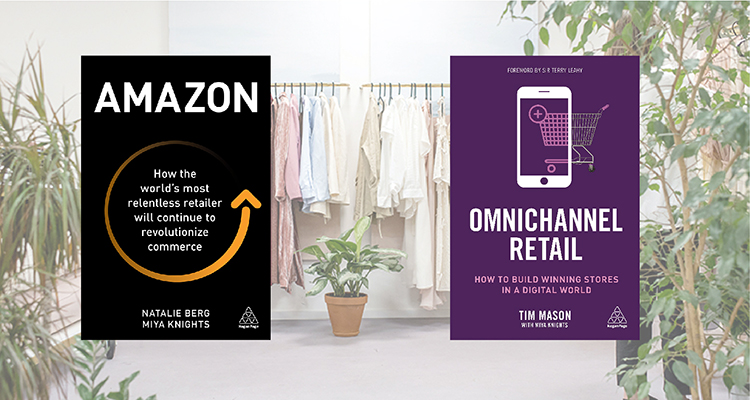Interview Special with Miya Knights
Current retail challenges and how to deal with them
The world has been facing a very challenging and unpredictable period since early 2020. The recent COVID-19 pandemic affects various aspects of our daily lives: Social distancing, people stay at home, schools are closed and many businesses can only work to a limited extent or are closed completely. Which of course causes various challenges, not only for larger companies, but especially for smaller brick and mortar retailers and of course also for the consumers.
We had the chance to speak with author and retail expert Miya Knights, currently in the UK, about the impact of this exceptional situation on retail and how to deal with current challenges.

Br24: What do you think is the most important thing retailers should focus on during these times?
Miya Knights: All retailers should focus on maintaining the health and safety of staff and customers as their primary concern, especially those in essential categories that have continued to trade.
They should implement social distancing, priority shopping hours for vulnerable customers and other additional safety measures in these kinds of stores, as well as an online delivery service. The impact of these measures should, in turn, be tightly tied to supply chain availability and capacity planning.
Retailers in non-essential categories where stores, venues and other sales outlets have been forced to close should certainly evaluate the feasibility of trading online to mitigate immediate cashflow, liquidity and revenue challenges. But, only if the situation and circumstances make it safe to do so, and staff are willing.
Staff will only be willing if sufficient extra measures are taken to safeguard their safety in the workplace, as well as their incomes through furlough in the event they are unable to work. I note Matalan (note from Br24: a British fashion and homeware retailer) has given its workers this choice. Once all of these things are considered, a retailer may then choose to continue to fulfil online orders if there is enough consumer demand.
How can they be still visible and relevant to their customers?
I covered the fact that non-essential retailers could default to on e-commerce delivery services. I note that food home delivery platforms, such as Uber Eats and Deliveroo, has seen a massive increase in restaurants signing up to its platform, for example.
There’s also been an uptick in digital gift voucher and coupon sales, as consumers use them to mark the special occasions of loved ones and friends while self-isolating. Some of these gifts may also be for experiences they can share together after lockdown ends, enabling retailers to still generate some revenue against future sales.
How do you think brick and mortar retail stores can most effectively present themselves online?
I think they should be trading online if they can. Those that don’t already have an e-commerce presence can look at marketplaces such as eBay, Etsy and Amazon for a quick, low point of entry. Social media networks are a good channel for customer engagement, particularly for targeted or localised messaging.
From a marketing perspective, silence is better than communicating ‘business as usual’; overtly salesy messages will come across as being tone deaf and insensitive. But communicate community, charity and health-focused initiatives, if possible.
Focus on promoting aspects of products ad services that are particularly useful or relevant at this time or offering helpful advice and support. Itsu Grocery (Note from Br24: Itsu is a British fast food/restaurant chain and grocery company), for example, has launched ‘culture classes’ on Instagram Stories that teach children and families about Asian culture.
But beware of falling foul of exploitative commercial tactics, especially where health claims are concerned.
It may be possible to pivot seasonally-focused sales and marketing activity, such as Easter, around family, remotely connecting with loved ones and staying home, instead of entertaining and going out.

What role does visual content play in this? The way to present yourself, for example with the help of images?
Multimedia marketing and advertising delivery tends to have a higher chance of engaging and converting customers. The digital marketing company where I am Head of Industry Insight, Eagle Eye, has worked with brand and merchant clients using social networks to run promotional campaigns and found that video/motion formats are typically 12% more effective in leading to the redemption of an offer than a still image.
What lessons can retailers learn for the future from this crisis?
This crisis has accelerated trends that were already impacting retail before; namely, the shift to online and the need for agile, flexible omnichannel sales models, marketing engagement and supply chain capability. Retailers need to learn that these attributes are a non-negotiable requirement of running a profitable business today.
Don’t worry about your product photos and presentation. We put you products and more professionally in the digital spotlight. For your online presence in e-commerce, online shops, social media, on your website and more.
- 2023
- January (1)
- 2022
- December (2)
- November (1)
- October (2)
- September (2)
- August (1)
- July (1)
- June (1)
- May (1)
- April (1)
- March (1)
- February (1)
- January (3)
- 2021
- December (2)
- November (1)
- October (3)
- September (2)
- August (1)
- July (3)
- June (1)
- May (2)
- April (1)
- March (1)
- February (2)
- January (4)
- 2020
- December (2)
- November (3)
- October (4)
- September (1)
- August (2)
- July (1)
- June (2)
- May (3)
- April (3)
- March (3)
- February (4)
- January (4)
- 2019
- December (1)
- November (2)
- October (5)
- September (1)
- August (3)
- July (2)
- June (2)
- May (3)
- April (2)
- March (3)
- February (2)
- January (4)
- 2018
- December (2)
- November (2)
- October (3)
- September (3)
- August (2)
- July (2)
- June (2)
- May (1)
- April (1)
- March (2)
- February (3)
- January (2)
- 2017
- December (2)
- November (2)
- October (1)
- September (1)
- August (1)
- July (1)
- June (1)
- May (1)
- April (1)
- March (1)
- February (1)
